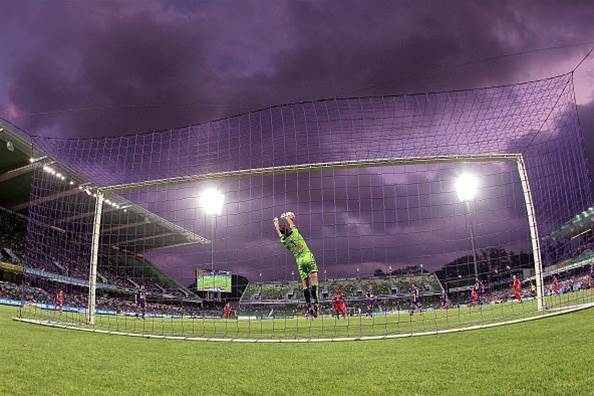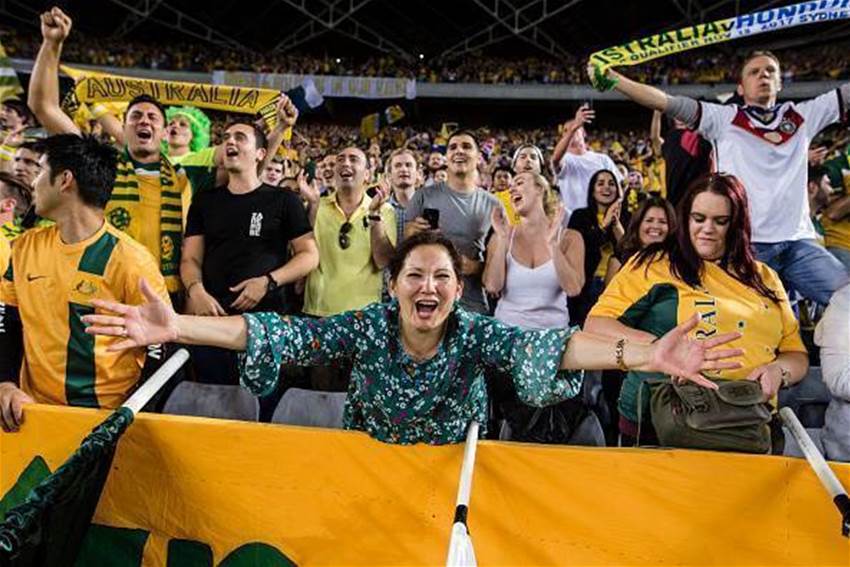The prospect of an independently run A-League, an FFA focused on player talent pathways coupled with huge population growth can be a platform to finally grow football on a mass scale in Australia.
However, cautions former Socceroo, A-League championship winner and Asian Champions League hero Ante Covic, the right people have to be involved to plan, execute and drive perhaps the most pivotal era in the game’s history.
“Drive around Sydney and Melbourne on the weekend, look at how many parks have junior football? We're still number one by a long way,” he told FTBL.
“If we can get all our ducks in a row… we’ve heard it for so long, ‘the sleeping giant’. This is a game that can explode but we haven’t got there yet.
“I’ve been critical of FFA as well as everyone else. So many decisions have hurt the game and that’s absolutely got to stop.
"Because the future is right in front of us, it’s there, we are the sport for the future, for women, for grassroots, for the A-League and W-League… the possibilities are endless.
“But we need as a code to get our act together, including of course the FFA. And we’ve just got to get the right people in the game’s key roles.”
As Covic says, despite the negativity around the game, Australia’s golden chance to get it spectacularly right could well be over the two decades.

An independently run A-League is set to create opportunity and business nous as club expansion for the A-League and Second Division continues to cater for new growth corridors around the country.
Add to an entrepreneurial A-League a national governing body freed up of the time to run the game and help produce world-class talent.
With population predictions tipping an Australia of 36 million by 2050, football’s future is now opening up on the horizon.
That’s the theory anyway.
Otherwise, the most popular football on the planet will have squandered yet another chance – and possibly its last chance – to position football as the number one choice for fans at the grassroots level and, and this is key, football at elite men’s and women’s level.
An independently run A-League is a start.
It will allow FFA to focus on its key and core responsibility of producing players for the national teams.
“I’ve been an advocate of the A-League being run independently for a while. I’m glad that it’s finally happening,” Covic added.
“Let’s see where they can take the A-League. And give them the freedom to not be shackled and bring back the fans to really.

“If you’re trying to attract the sort of people who’ll front up, say, $15 million in Western United’s case, but you put so many restrictions on what they can and can’t do.
"The freedom to market your club the best way possible – I always thought it would be difficult to convince someone to keep throwing money at it.
“Of course there has to be governance and FFA has to play a role in that respect, but to get the A-League back on track, we have to give clubs more responsibility to run things as they see fit.
“I see FFA meantime as really focusing now in the junior development sphere and focusing on national teams to help to produce the players we need. We need the national teams to be successful in the long run.
“And now, I’m hoping the FFA can look at some of these fees for registration at the grassroots level. We’re losing a lot of talent because of this exorbitant amount of fees at the junior level.
“I’m hoping in 10 years' time, we look back and say, ‘That was the best decision the game made’.”

According to government population projections (from intergenerational reports based on assumptions about future demographic trends about rates of fertility, mortality and net migration (incorporating current trends) and, by using different combinations of these assumptions), Australia’s population is set to increase from its current 24.6m to almost 36m by 2050.
Melbourne, in particular, is set for a huge boom.
By as early as 2028, it's projected to be Australia's biggest city.
By 2050, it will have grown to 8 million; the size of London and New York. It’s said to be the fourth fastest growing developed city on the planet.
A new A-League club in Melbourne’s West - Western United - is ideally placed to begin this rebirth of football.
Team 11 be across the bay in the booming south-east corridor in and around Dandenong is also well placed to continue the boom in Victoria.
As an example of population growth across Australia, Covic has transitioned into being a football consultant on a major project in Sydney’s booming Greater West.
It’s a venture with Blacktown City Council who are funding a $100m multi-sport elite international centre of training excellence very close to Western Sydney Wanderers’ Blacktown base.

The project hopes to attract top-class Asian club sides for pre-season training where they can be accommodated, train and access top-class medical and recovery facilities.
“The projections are that by 2036, Blacktown will have half a million people. And with a new international airport and the infrastructure around it will be massive,” Covic said.
“I agree we have a bright future. Just seeing the growth there and the nearby Macarthur region who have an A-League team starting 2020 based around huge growth in that south-west corridor.
“Major cities are going to grow and the population will need more sporting choices for young families.
“And look at football right now, with the huge grassroots numbers we have. Football has a stranglehold.”
Covic, though, hasn’t left football after hanging up his gloves officially last year aged 42.
After a stellar career at club level in the NSL and A-League as well as in Scandinavia, the former Socceroo goalkeeper is now keeper coach with NPL side Marconi, his original club in the NSL.
And he’s still very much invested in the game’s future.
With that in mind, he adds the recent board changes at the FFA level were not radical enough.

“Even with the board changing over it still felt a bit same-same," he added.
“So much huff and puff, ‘We’ll make changes’ yet it was the same old agendas without getting some of the real football people with a passion for the game, who desperately want the game to succeed and are selfless for the game.
“They’re the type of people we need to really ignite the game’s potential. It’s on a platter. The demand for football is massive, and with the population growth, we’ve got to harness that.
“And how many chances do you want to wake up this sleeping giant?”
Related Articles

Leckie seals new marquee deal as Good, Maclaren head to Asia

Socceroo-in-waiting seals Championship deal













